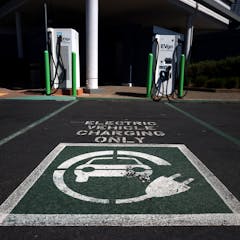
Articles sur Air pollution
Affichage de 41 à 60 de 392 articles

Air pollution causes chess players to make more errors – this may have implications for high-skilled professionals.

If the EV transition focuses exclusively on drivers in privately owned cars, it won’t meet many Americans’ mobility needs, particularly in underserved communities.

While lung cancer rates have decreased by 43% in men, they have risen by 79% in women. New screening guidelines and recognizing early symptoms can help address the changing face of lung cancer.

The UK space launch failed but it succeeded in releasing hazardous pollutants to multiple layers of the atmosphere.

Be prepared. Download an air quality app, stock up on respirators and stay inside if you can.

Noxious smells and blowing ash initially made the homes unlivable. But even after their homes were cleaned, some residents still reported health effects months later.

This new exhibition at Hobart’s Mona captures Tomás Saraceno’s collaborations with research institutes.

New research reveals that the London Underground is polluted with small particles which may carry negative health effects for humans.

Some air-cleaning devices release pollutants such as ozone and nitrogen oxides.

To achieve radical improvements in air quality, the ULEZ expansion must be coupled with better public transport and more spaces for pedestrians.

A new report by the UK’s Chief Medical Officer sets out what must happen.

Vendors are continuously exposed to outdoor air pollution from traffic or automotive emissions and cooking fuels such as gas and open fires.

In a systematic review of existing studies, researchers found that air pollution such as fine particulate matter can interfere with regions of the brain responsible for emotional regulation.

The best way to cut air pollution is to burn less fossil fuel.

The decision by African ministers of environment to end open waste burning will not only save lives but also open up new income streams.

Togo can take bold actions to reduce climate change emissions and also improve the health of its citizens.

As California goes on regulating air pollution, other states often follow – including the Golden State’s ambitious goals for cleaning up emissions from trucking.

Brown carbon refers to a range of pollutants found in smoke from wildfires. They can contribute to global warming before they undergo a process that alters their chemical properties.

The rise of e-commerce means billions of packages are delivered in the US each year. That creates traffic and pollution, but urban freight researchers are finding better way to get goods to customers.

The air that arrives at Kennaook is said to be some of the cleanest in the world. I set up my camera and tripod, and started filming.
